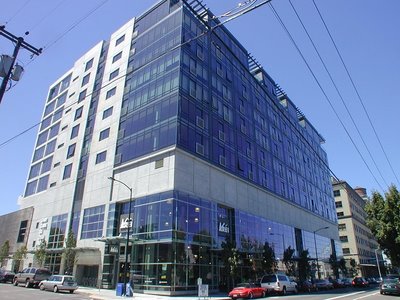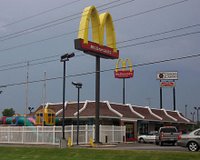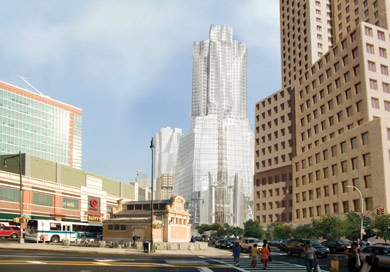
As everyone knows by now, Dubai is fast becoming the Las Vegas (and more) of the 21st Century. The plans of islands mimmicking the earth's land masses are nothing new, but now they're planning on "branding" a whole city! To be included is an airport with the capacity of O'hare in Chicago and a "logistics city" that will be a hub for most of the middle east, Northern Africa, and parts of Asia. The scale is mind boggling.
read the whole articleSections of the new city:
Dubai World Central International Airport:This new facility will be 10 times the size of the current Dubai International Airport and Dubai Cargo Village combined. Its passenger capacity of over 120 million passengers a year can be judged in context alongside the world’s busiest airport Atlanta which in 2004, for which the latest figures are available, handled 83.5 million passengers.
Dubai Logistics City:This key plank in Dubai’s unique truly integrated multi-modal logistics proposition represents Phase I of Dubai World Central. It is designed as the region’s unchallenged logistics hub with a geographic consumer footprint of some two billion people throughout the Middle East, Indian Sub-continent, African and the CIS – and all within three-to-four hours flying time from Dubai.
To quote, "With Dubai World Central we are taking the future into our own hands,” said HH Sheikh Ahmed. “Dubai World Central will be a global
brand known for its superb facilities and infrastructure and for the boost it will give to local and regional economies and downstream to billions of consumers."
Residential City:To be developed in three phases and covering some 7.16 million square metres, freehold land plots in Residential City are to be offered to developers on the open market who will then build in accordance with masterplan guidelines. Up to 250,000 people are expected to live in the ‘city’ where some 20,000 people will be employed. The Dubai Metro will serve Residential City which will also have a dedicated, integrated road network.
Commercial City:To be developed in five phases, this ‘city’ will cover some 14.53 million square metres. Designed as Dubai World Central’s business and finance hub, Commercial City will feature more than 850 towers, ranging from 6-75 storeys in height – which will be home to a variety of businesses expected to employ around 130,000 people and offer superdeluxe homes. A cluster of luxury villas are also included in the masterplan.
and of course:
Golf Resort:To be offered on the open market to a private developer, Dubai World Central will feature two 18-hole golf courses each having a distinct feel from a traditional desert links style to a more lush tropical resort course. In addition to the courses there will be extensive practice facilities, driving ranges and putting greens as well as a luxury clubhouse with restaurants and a pro-shop.
 And it all leads back to us. Is the desert a place we should be inhabiting with our version of reality?
And it all leads back to us. Is the desert a place we should be inhabiting with our version of reality? A little research on Fairfield homes leads to a long list of environmental destruction.
A little research on Fairfield homes leads to a long list of environmental destruction.





















